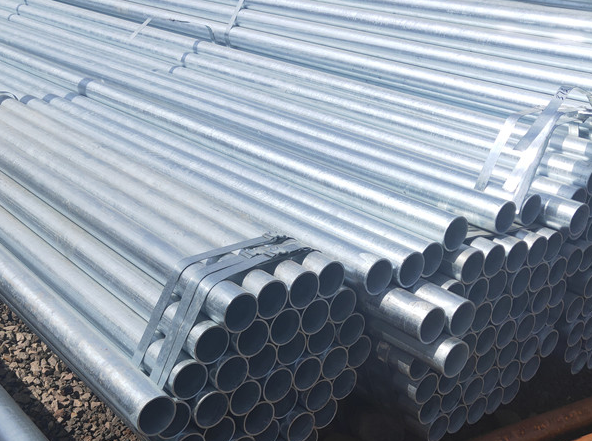
Welding Characteristics and Process of Galvanized Steel Pipe
Date:2019-06-20 keywords: galvanized tube welding, galvanized steel pipe
Galvanized steel pipe has the advantages of corrosion resistance, long service life, and the price of galvanized steel pipe is correspondingly low, so its usage rate is now higher and higher. But when users welding galvanized pipe. if didn't pay attention to it, there will be some unnecessary troubles occured. What problems should we pay attention to when welding galvanized pipes?
1. Polishing
The galvanized layer of the weld must be polished away, otherwise bubbles, trachoma, and false welding will occur. It also makes the weld brittle and the rigidity decreases.

2. The welding characteristics
Galvanized steel is generally coated with a layer of zinc outside the low carbon steel, and the layer is generally 20 um thick. Zinc has a melting point of 419 ° C and a boiling point of about 908 ° C. In welding, zinc melts into a liquid that floats on the surface of the bath or at the root of the weld. Zinc has a large solid solubility in iron, zinc liquid will deeply etch the weld metal along the grain boundary, and low melting point zinc forms "liquid metal embrittlement". At the same time, zinc and iron can form intermetallic brittle compounds. These brittle phases reduce the plasticity of the weld metal and cause cracks under tensile stress. If weld fillet welds, especially fillet welds of T-joints, are most susceptible to penetration cracks. When the galvanized steel is welded, the zinc layer on the surface and the edge of the groove is oxidized, melted and evaporated under the action of arc heat to volatilize white soot and steam, which easily causes weld pores. ZnO formed by oxidation has a high melting point of about 1800 ° C or higher. If the parameters are too small during the soldering process, ZnO slag will be caused. Since Zn becomes a deoxidizer. The FeO-MnO or FeO-MnO-SiO2 low melting point oxide slag is produced. Secondly, due to the evaporation of zinc, a large amount of white soot is volatilized, which has irritating and harmful effects on the human body. Therefore, the galvanized layer at the weld must be polished and disposed of.
3. Welding process control
The pre-weld preparation of galvanized steel is the same as that of ordinary low-carbon steel. It is necessary to pay attention to the groove size and the nearby galvanized layer. For the penetration, the groove size should be appropriate, generally 60~65°, to leave a certain gap, generally 1.5~2.5mm; in order to reduce the penetration of zinc into the weld, the galvanization in the groove can be done before welding. After the layer is removed, it is soldered again.
In the actual work, the centralized beveling is adopted, and the blunt edge process is not used for centralized control. The two-layer welding process reduces the possibility of incomplete penetration. The electrode should be selected according to the base material of the galvanized steel pipe. Generally, the low carbon steel is considered to be easy to handle, and J422 is more common. Welding method: When welding the first layer of welds of multi-layer welding, the zinc layer is melted as much as possible and vaporized and evaporated to escape the weld seam, which can greatly reduce the liquid zinc remaining in the weld. In the welding of the fillet weld, the zinc layer is also melted as much as possible in the first layer and vaporized and evaporated to escape the weld. The method is to first move the end of the electrode forward about 5~7 mm, when the zinc layer is made. After melting, return to the original position and continue to weld forward. In the case of cross-welding and vertical welding, if short-slag welding rods such as J427 are used, the tendency of undercutting will be small; if the back-and-forth reciprocating strip technology is adopted, the quality of non-defective welding can be obtained. Galvanized steel can also be used with MIG arc brazing, an innovative technology developed by the German company Cloos.
Reminder: The above requirements for welding galvanized pipes must be kept in mind to avoid unnecessary trouble or danger.
News Update :
Working Pressure of Seamless Steel Pipes...
©2017 Permanent Steel Manufacturing Co.,Ltd https://www.permanentsteel.com All Rights Reserved.
Terms of Sale|Privacy Policy


